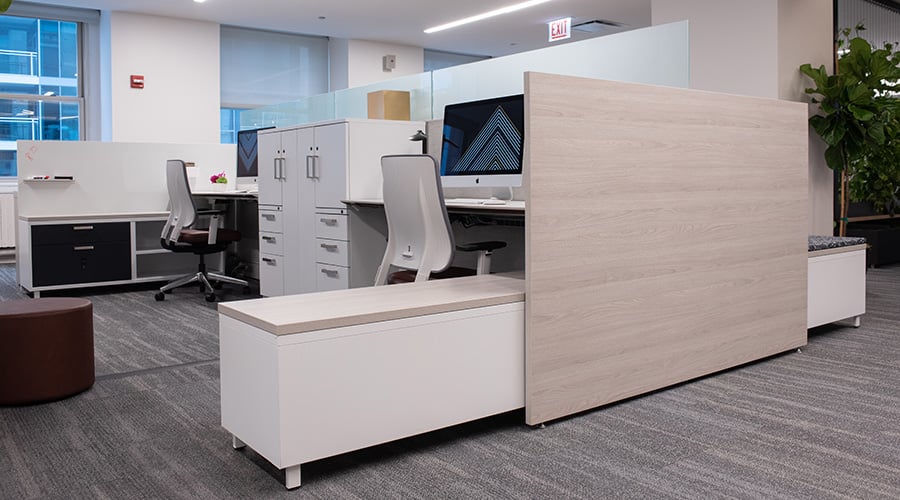Can Thoughtful Design Prevent Pandemic-Induced Workplace Conflict?

Workplaces nationwide are cautiously opening up with some new safety protocols in place. For some employees, that’s cause for celebration. For others, it’s cause for concern.
The Wall Street Journal recently reported on clashes between coworkers with different philosophies on how best to battle coronavirus at the office. Some have not taken kindly to makeshift paperclip barriers that close off cubicles. Others have grown weary of their colleagues’ liberal use -- and perhaps overuse -- of disinfectant.
At KI, we think there are better ways to keep people safe and comfortable at work. Below, we offer a few suggestions for how employers can prevent potential pandemic-induced conflict.
1. Encourage Flexible Work
Not everyone will be comfortable returning to the office, no matter how many precautions employers take. Perhaps they’re immunocompromised or worried about bringing the virus home to a family member. Now is the time for employers to empathize with their employees’ anxieties -- not dismiss them.
Our survey data reflects varying levels of concern among workers. Nearly 30 percent of respondents said they were worried that their colleagues would still come into the office while sick. More than 50 percent said they’d like remote work to remain a permanent option.
Employers can meet their employees where they are by adopting flexible work policies like remote work -- and making sure their company culture supports employees who use them. When employees have the option to work remotely penalty-free, the entire workplace becomes happier and healthier.
2. Set Boundaries in Shared Spaces
Our team at KI recently surveyed customers to learn how companies are adjusting to the return to the office. Nearly one-third of respondents thought social distancing would be difficult in shared office spaces. Three in four said they would only use meeting spaces if required or if their employers decreased the number of seats in the rooms.
Employers should communicate their expectations for shared spaces clearly and frequently, including rules for social distancing and mask-wearing.
For example, employers may want to set up check-in stations in lounges or conference rooms with markerboard Tattoo Screens that display the rules for the space and include a magnetized shelf holding hand sanitizer. For larger spaces like company cafés, architectural walls or Connection Zone Lockers can delineate space for small groups.
3. Put Employees in Charge of Their Workspace
Workers are understandably concerned about picking up germs at the office. So, it’s more important than ever that employers make them feel comfortable upon their return.
Research shows that when employees control the layout of their workspace, they’re happier, more motivated and more productive. Our Universal Height-Adjustable Screens, for example, can give workers that control, by allowing them to signal when they’re open to visitors.
The Tattoo Collection can empower workers to create the level of social distancing they desire and tailor their workspaces to the type of project they’re tackling. Tattoo’s work surfaces, space-dividing screens, seating and storage are also easily maneuverable. So, it’s simple for employees to adjust their office layout to accommodate groups of more or less people, depending on the task at hand.
Take Care of Each Other
It’s natural to feel apprehensive about leaving the safety of home to return to work. But with thoughtful workplace policy and design changes, employers can make sure that their employees know they can return to an office that will prioritize their health and well-being.
Learn more about KI's ideas and options for safely returning to the office.
Subscribe
Stay up to date with the latest trends and more.







